Consulting with Canadians to Build the Investing in Canada Plan - Introduction
The Government of Canada will invest more than $180 billion in communities across Canada over 12 years. Canada's long-term infrastructure plan, Investing in Canada, will create economic growth, build inclusive, sustainable communities, and support a low carbon, green economy. The Plan is focused on five key areas: public transit; green infrastructure; social infrastructure; trade and transportation; and rural and northern communities.
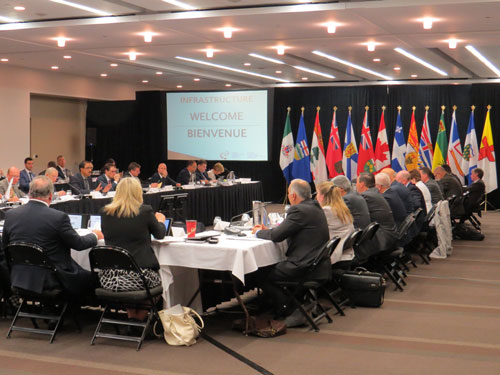
Federal, provincial and territorial infrastructure Ministers in Edmonton, September 2016.

Touring the future site of the Gordie Howe International Bridge in Windsor, November 2015.
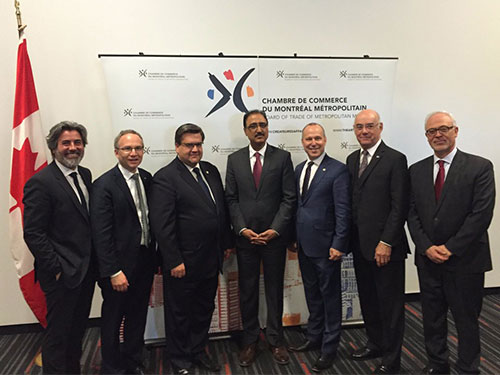
Meeting at the Montreal Chamber of Commerce, May 2016.
The Minister of Infrastructure and Communities, Amarjeet Sohi, and the Department undertook an extensive outreach initiative to develop the Investing in Canada plan with Canadians. These outreach efforts reached a significant number of groups, agencies, sectors, business and labour leaders and other orders of government passionate about a wide range of infrastructure themes.
The Minister and departmental officials also worked closely and heard from provincial, territorial, municipal and Indigenous leaders, official languages minority communities, academics, and other influential partners from green, social, transit and northern communities.
These leaders and influencers helped us to identify the needs of their communities. We listened to them and their vision has been captured in our plan.
How we consulted
Minister Sohi and senior departmental officials led the Department's engagement efforts with provinces, territories, municipalities, and municipal organizations throughout 2016 and into 2017. They met with key stakeholders and partners, including associations, think tanks, academics, labour representatives, and the private sector.
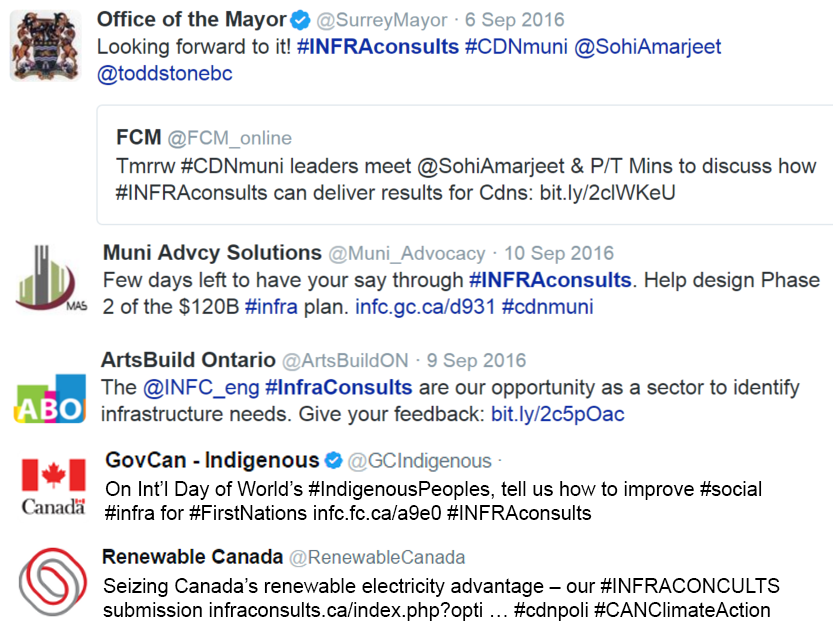
Image 1: Five tweets of Infrastructure Canada stakeholder and partners.
Long Text Description of Image 1
Part 1 of Image 1 is a tweet by "Office of the Mayor (@SurreyMayor)". The tweet reads "Looking forward to it! #INFRAconsults #CDNmuni @SohiAmarjeet @toddstonebc"
"Office of the Mayor" quote's tweet from "FCM (@FCM_online)" which reads "Tmrrw #CDNmuni leaders meet @SohiAmarjeet & P/T Mins to discuss how #INFRAconsults can deliver results for Cdns: bit.ly/2clWKeU"
Part 2 of Image 1 is a tweet by "Muni Advcy Solutions (@Muni_Advocacy)". The tweet reads "Few days left to have your say through #INFRAconsults. Help design Phase 2 of the $120B #infra plan. Infc.gc.ca/d931 #cdnmuni"
Part 3 of Image 1 is a tweet by "ArtsBuild Ontario (@ArtsBuildON)" which reads "the @INFC_eng #INFRAconsults are our opportunity as a sector to identify infrastructure needs. Give your feedback: bit.ly/2c5pOac"
Part 4 of Image 1 is a tweet by "GovCan - Indigenous (@GCIndigenous)" which reads "On Int'l Day of World's #IndigenousPeoples, tell us how to improve #social #infra for #FirstNations infc.fc.ca/a9e0 #INFRAconsults"
Part 5 of Image 1 is a tweet by "Renewable Canada (@RenewableCanada)" which reads "Seizing Canada's renewable electricity advantage - our #INFRACONCULTS submission infraconsults.ca/index.php?opti ... #cdnpoli #CANClimateAction"
Officials met partners, stakeholders and influencers at their annual conferences to discuss key issues impacting green, social and transit infrastructure investments. Officials engaged the public transport sector and other priority areas to discuss issues raised by key stakeholders. Minister Sohi participated in roundtables to facilitate discussions and get helpful feedback from partners.
The Department coordinated closely with Indigenous and Northern Affairs Canada to better understand the essential infrastructure needs for Indigenous communities. These communities face unique infrastructure challenges. The Department talked with Indigenous leaders and organizations to better understand their issues and to hear their views on how to improve them.
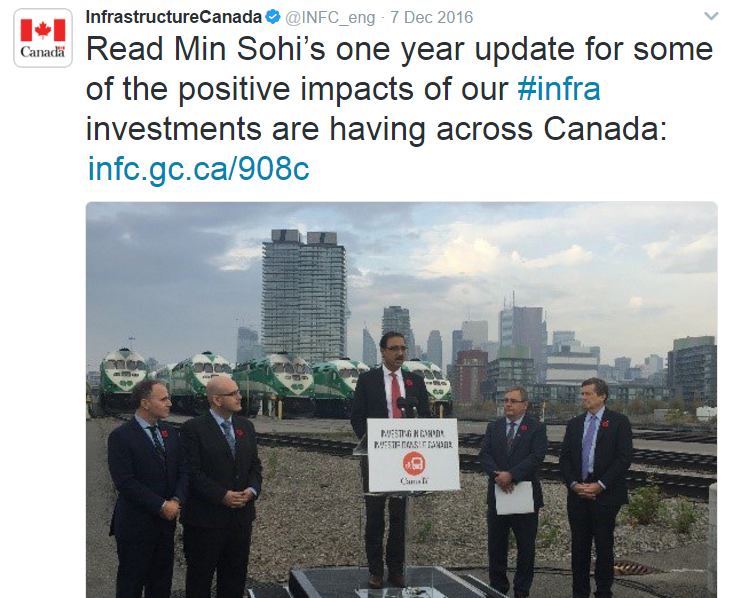
Image 2: Minister Sohi announcing new investments in Toronto for public transit infrastructure, November 2016.
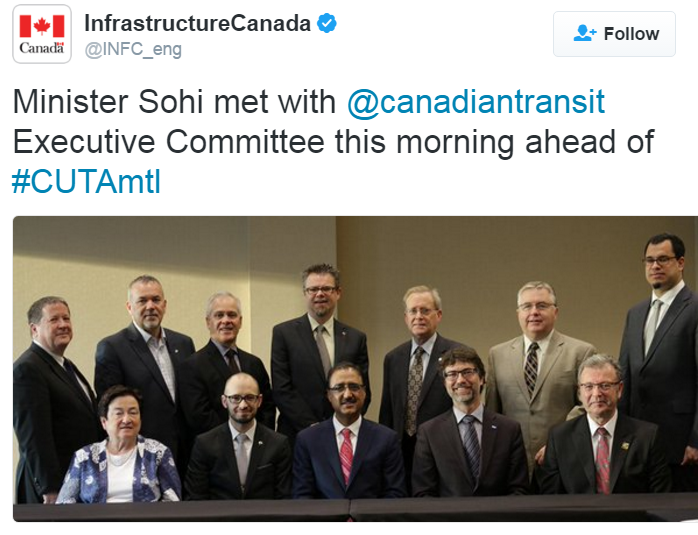
Image 3: Minister Sohi meeting with CUTA members in Montreal, November 2015.
Long Text Description of Image 2 and 3
Image 2 is a tweet by "InfrastructureCanada (@INFC_eng)". The tweet reads "Read Min Sohi's one year update for some of the positive impacts of our #infra investments are having across Canada: infc.gc.ca/908c"
Image 3 is a tweet by "InfrastructureCanada (@INFC_eng)". The tweet reads "Minister Sohi met with @canadiantransit Executive Committee this morning ahead of #CUTAmtl"
Minister Sohi hosted a landmark first-ever gathering of federal, provincial and territorial Infrastructure Ministers along with a cross-section of municipal leaders in September 2016. Infrastructure Canada's overall engagement strategy included a series of roundtables organized with the Federation of Canadian Municipalities (FCM) in June of 2016 and a forum of federal, provincial and territorial Deputy Ministers of infrastructure in June 2016.
Minister Sohi reached out to Members of Parliament and Senators to encourage them to engage local partners, stakeholders and constituents across the country. He wanted to hear from community voices to ensure they were part of the development of our long-term infrastructure plan and better understand their needs and priorities.
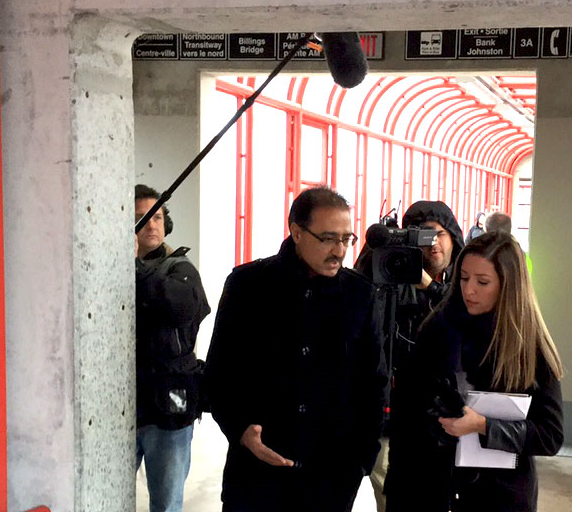
Minister Sohi meeting at site of Ottawa O-Train, December 2015.
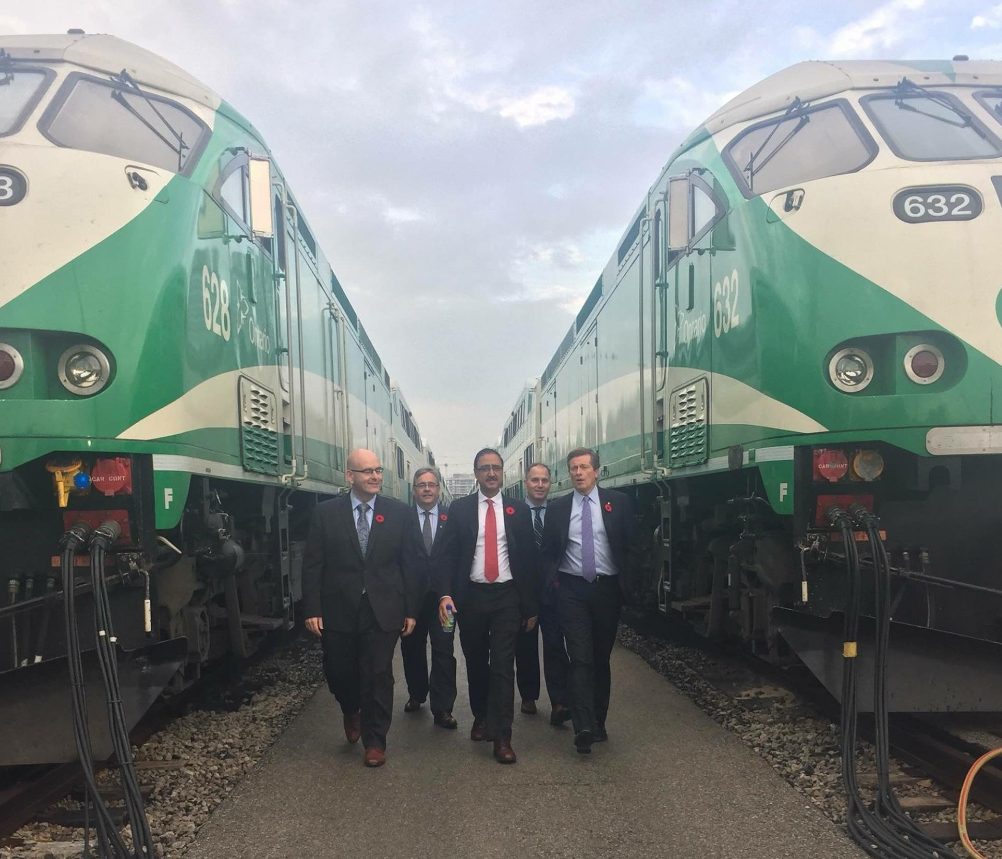
Minister Sohi meeting at site of GO Transit in Toronto, November 2016.
Other federal departments conducted public engagement on related issues: climate change, clean technologies, housing, and the long-term vision for transportation in Canada.
Infrastructure Canada supplemented these engagement efforts with a public consultation, #INFRAconsults, in summer 2016. The Department connected virtually with Canadians through the #INFRAconsults platform. Canadians were able to share their thoughts on infrastructure, speak to the priorities of their communities, and provide new ideas on infrastructure.
What we heard
The Department identified common themes throughout the engagement process. Provinces, territories and the FCM indicated that they are seeking flexible, predictable funding, streamlined processes and a focus on outcomes. Our partners underlined the need for a clear vision that could be articulated through an infrastructure plan.
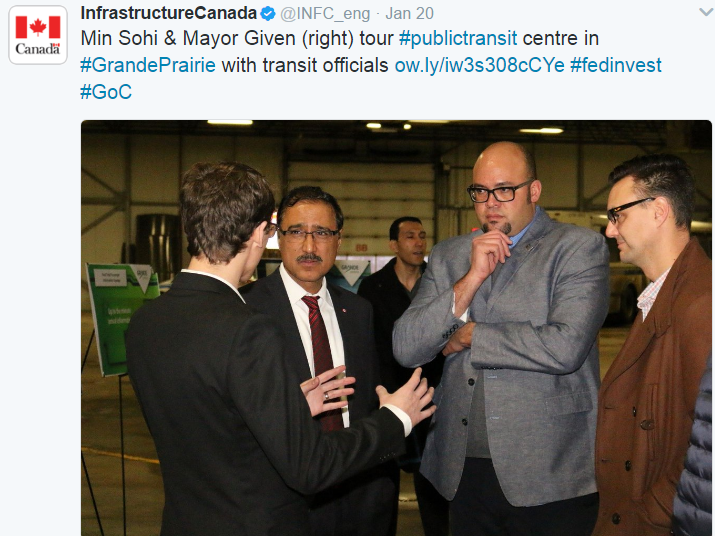
Image 4: Minister Sohi meeting with transit officials in Grande Prairie, January 2016.
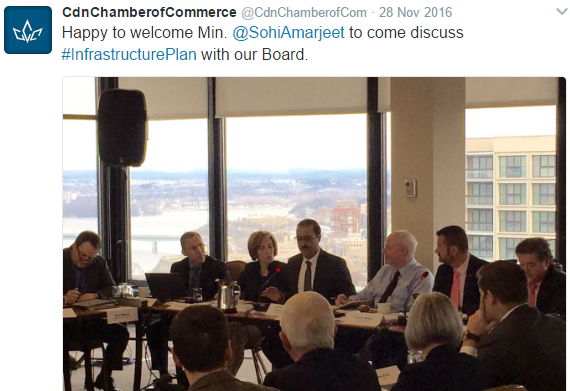
Image 5: Meeting at the Canadian Chamber of Commerce.
Long Text Description of Image 4 and 5
Image 4 is a tweet by "InfrastructureCanada (@INFC_eng)". The tweet reads "Min Sohi & Mayor Given (right) tour #publictransit centre in #GrandePrairie with transit officials ow.ly/iw3s308cCYe #fedinvest #GoC"
Image 5 is a tweet by "CdnChamberofCommerce (@CdnChamberofCome)". The tweet reads "Happy to welcome Min. @SohiAmarjeet to come discuss #InfrastructurePlan with our Board."
The results show that Canadians want infrastructure investments to create opportunities for people and build sustainable communities - whether it is social infrastructure that supports poverty reduction; green infrastructure that helps reduce air pollution and provides families with clean drinking water; or public transit that allows citizens access community resources and get to work.
The feedback from Canadians, outlined in the report, was integrated into our broader engagement efforts with stakeholders across the country and helped shape the Investing in Canada plan.
- Date modified: